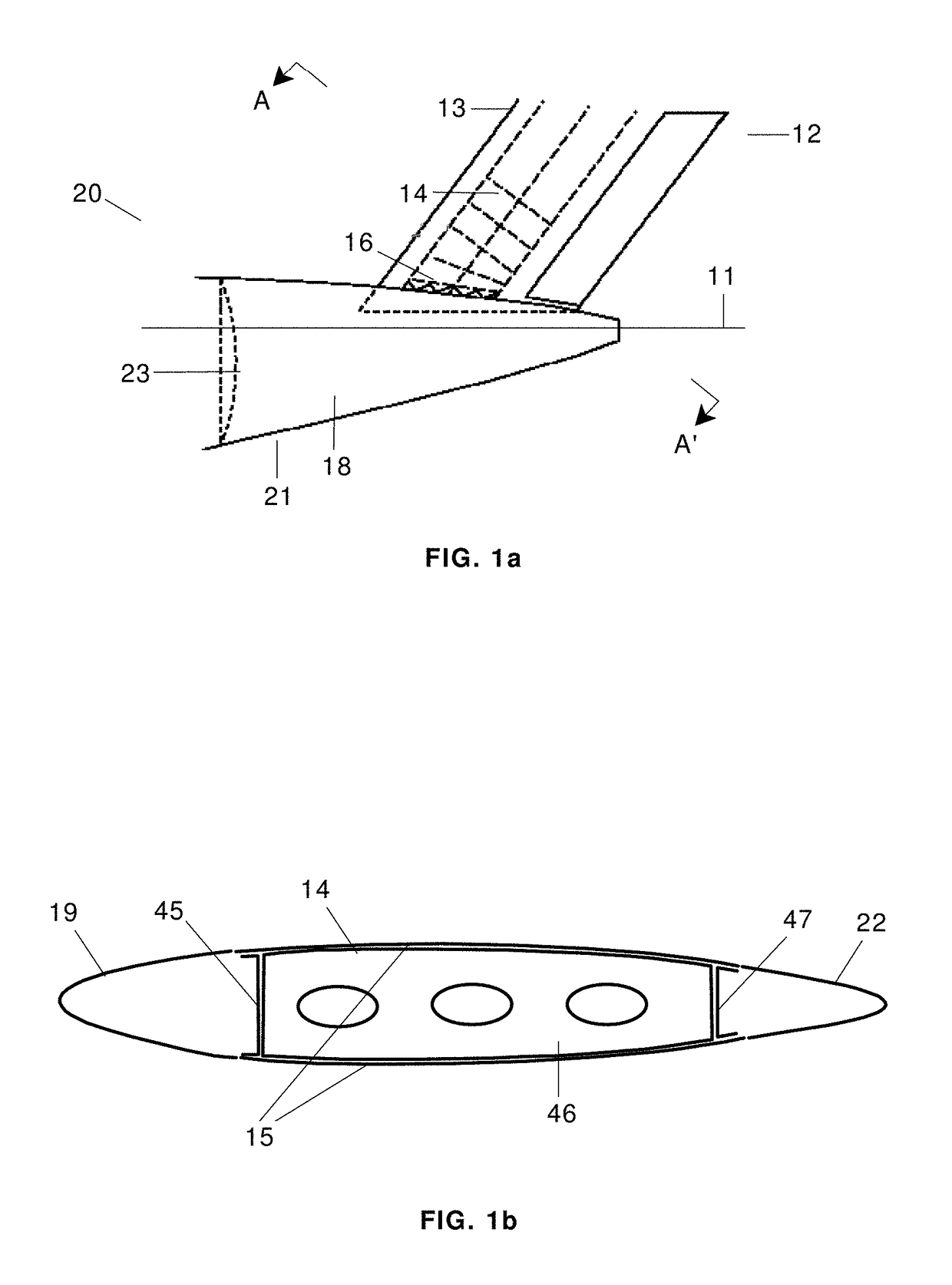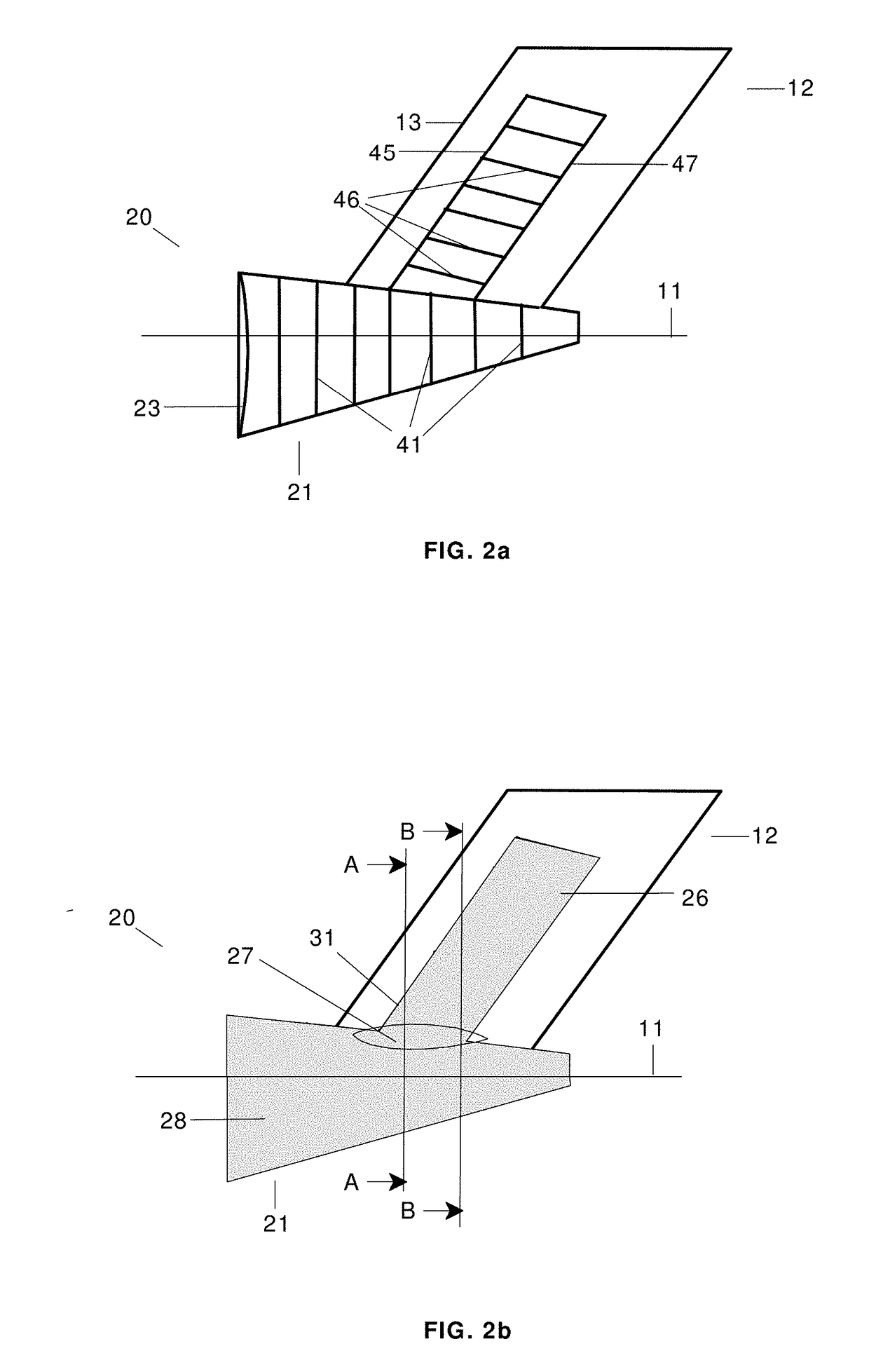Aircraft having a rear section with a continuous skin for the fuselage and the vertical tail plane
a vertical tail plane and fuselage technology, applied in the rear section of aircraft, can solve the problems of inability to meet the requirements increase the manufacturing cost, and drawback of the main interface fitting b>16/
- Summary
- Abstract
- Description
- Claims
- Application Information
AI Technical Summary
Benefits of technology
Problems solved by technology
Method used
Image
Examples
Embodiment Construction
[0069]The main difference between an aircraft according to the invention (see FIGS. 2a and 2b) and the aircraft mentioned in the Background (see FIGS. 1a and 1b) is that the main interface fittings 16 for joining the fuselage rear section 21 and the lateral skins of the torsion box 14 of the vertical tail plane 13 have been eliminated and said junction is accomplished through a continuous skin 31 (formed by two lateral continuous skins placed symmetrically with respect to the middle vertical plane of the aircraft) joined to the inner structural components of the fuselage rear section 21 and of the vertical tail plane 13. Additionally, the fuselage rear section 21 may comprise a top panel 33 for the upper part of the fuselage located in between the lateral sides of the continuous skin 31.
[0070]The internal structure inside the transition and upper parts of the continuous skin 31, between the front and rear spars 45 and 47, may also comprise ribs 46 and intermediate spars (not represe...
PUM
 Login to View More
Login to View More Abstract
Description
Claims
Application Information
 Login to View More
Login to View More - R&D
- Intellectual Property
- Life Sciences
- Materials
- Tech Scout
- Unparalleled Data Quality
- Higher Quality Content
- 60% Fewer Hallucinations
Browse by: Latest US Patents, China's latest patents, Technical Efficacy Thesaurus, Application Domain, Technology Topic, Popular Technical Reports.
© 2025 PatSnap. All rights reserved.Legal|Privacy policy|Modern Slavery Act Transparency Statement|Sitemap|About US| Contact US: help@patsnap.com



